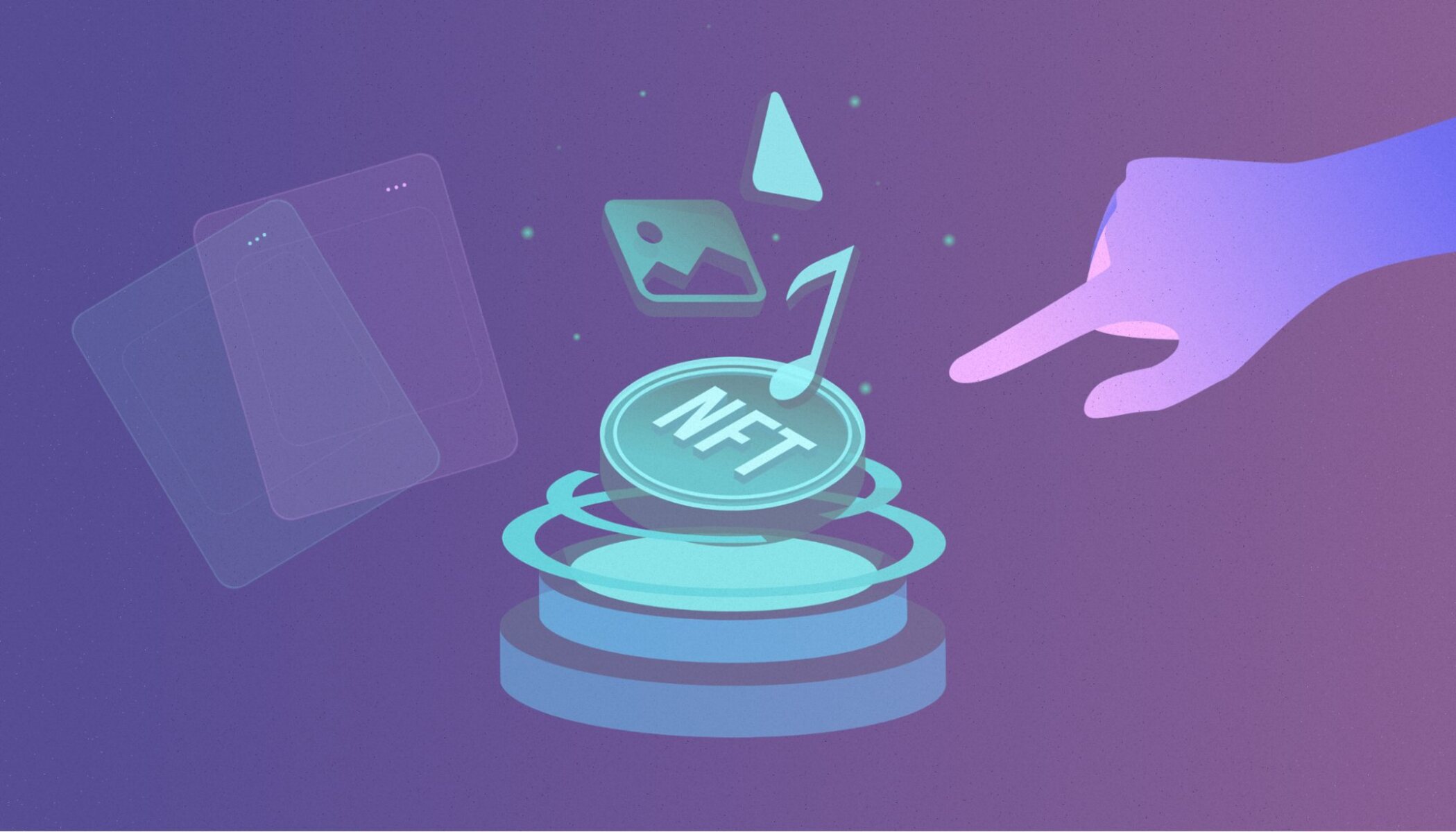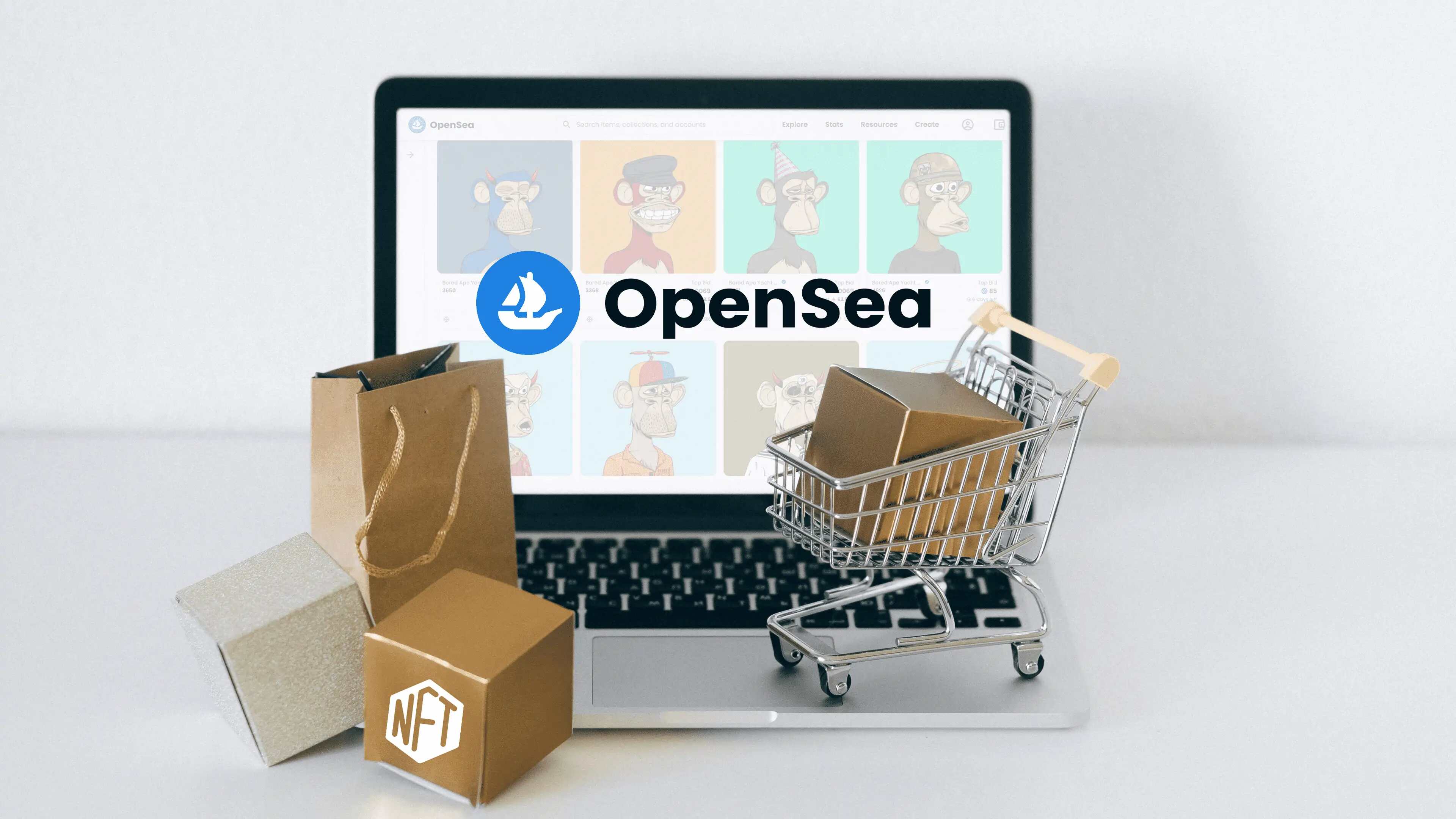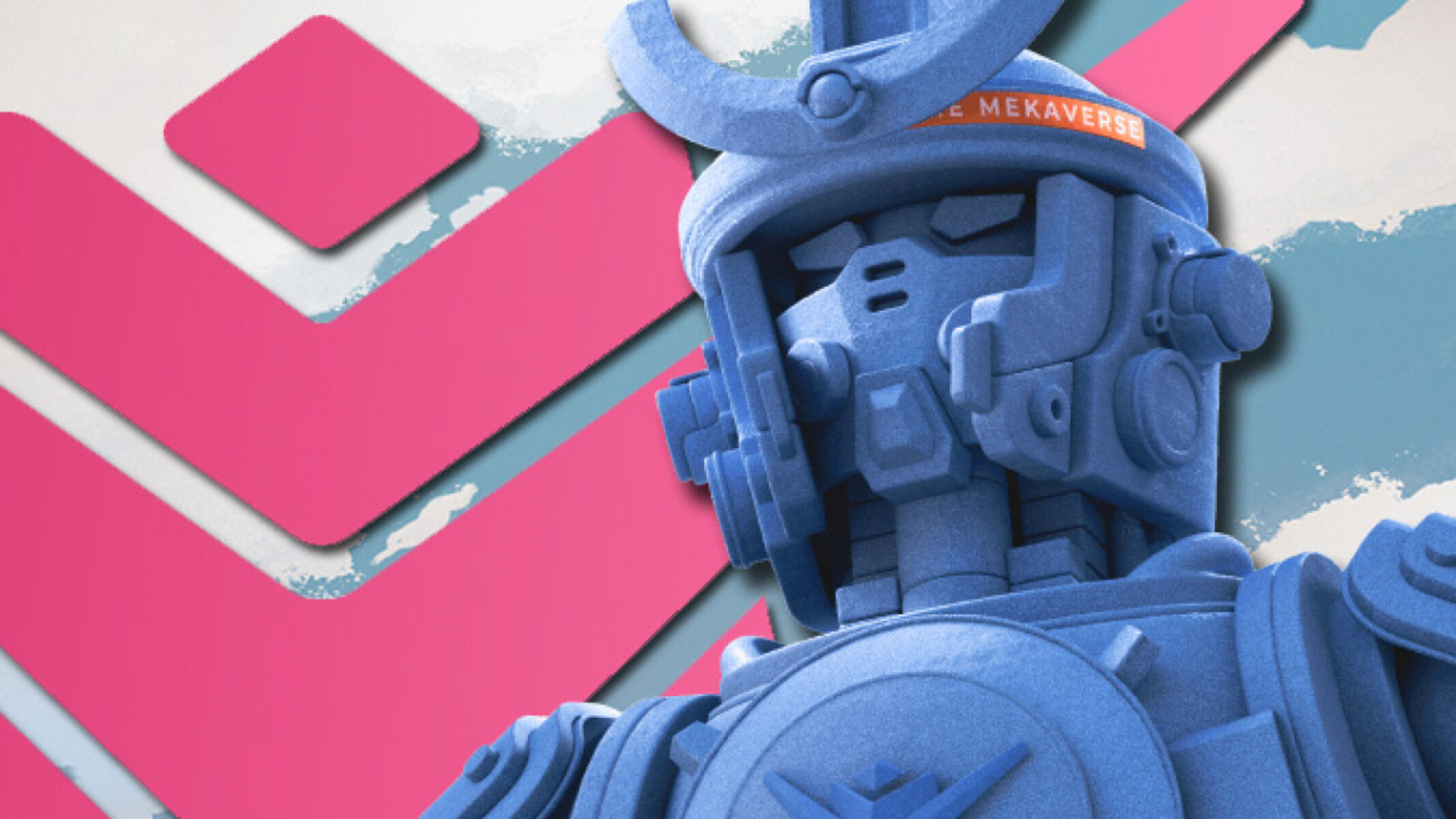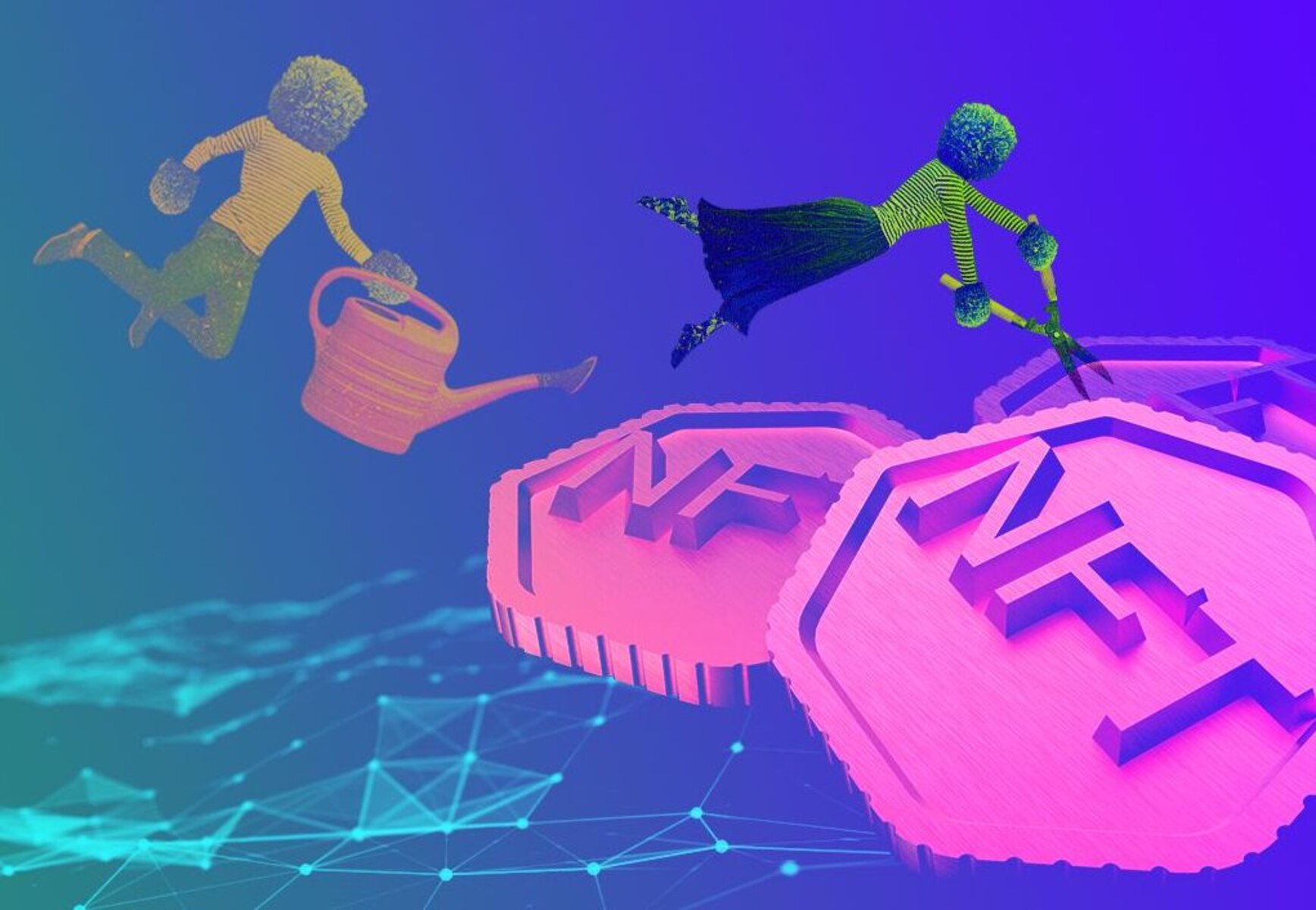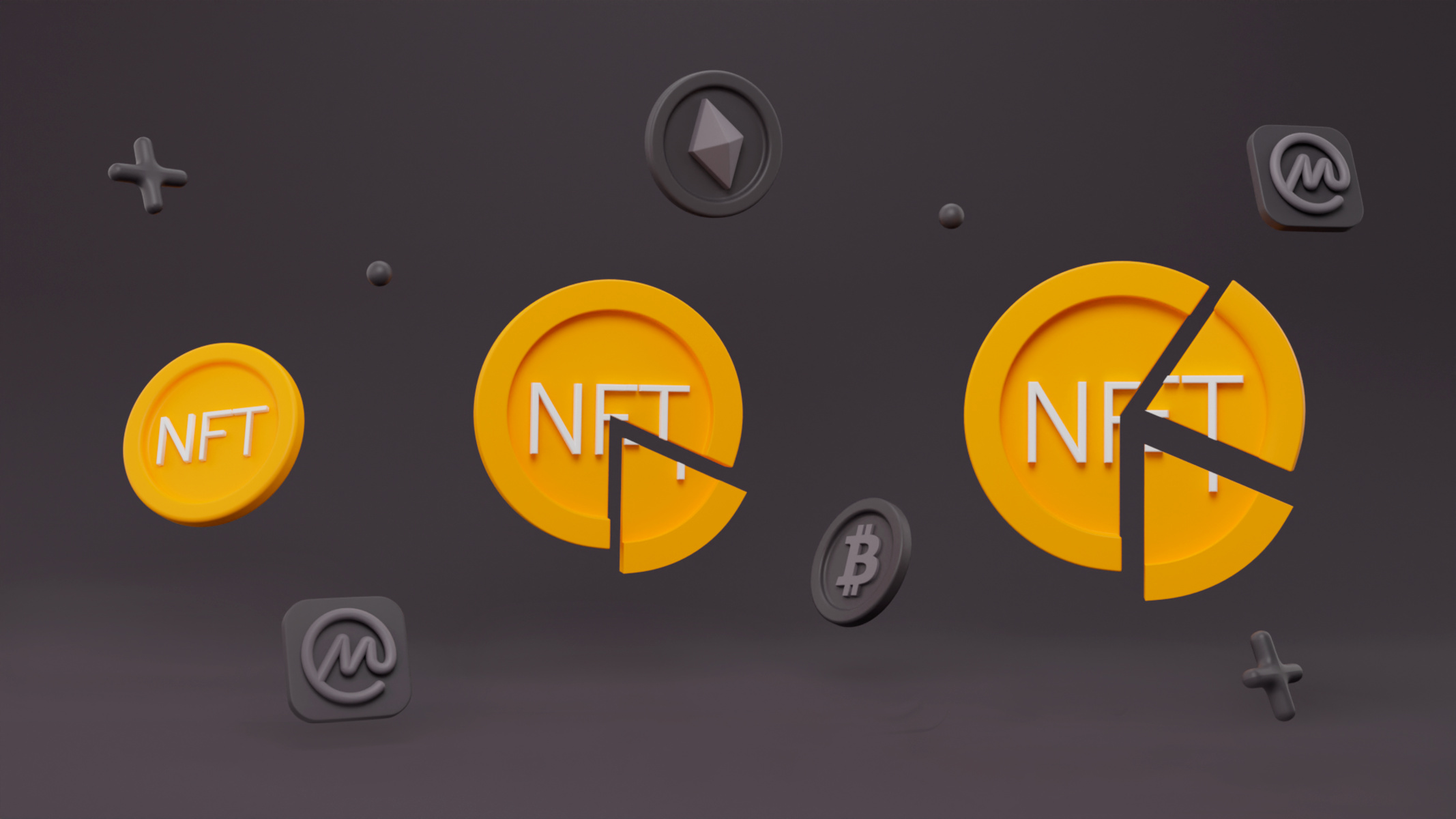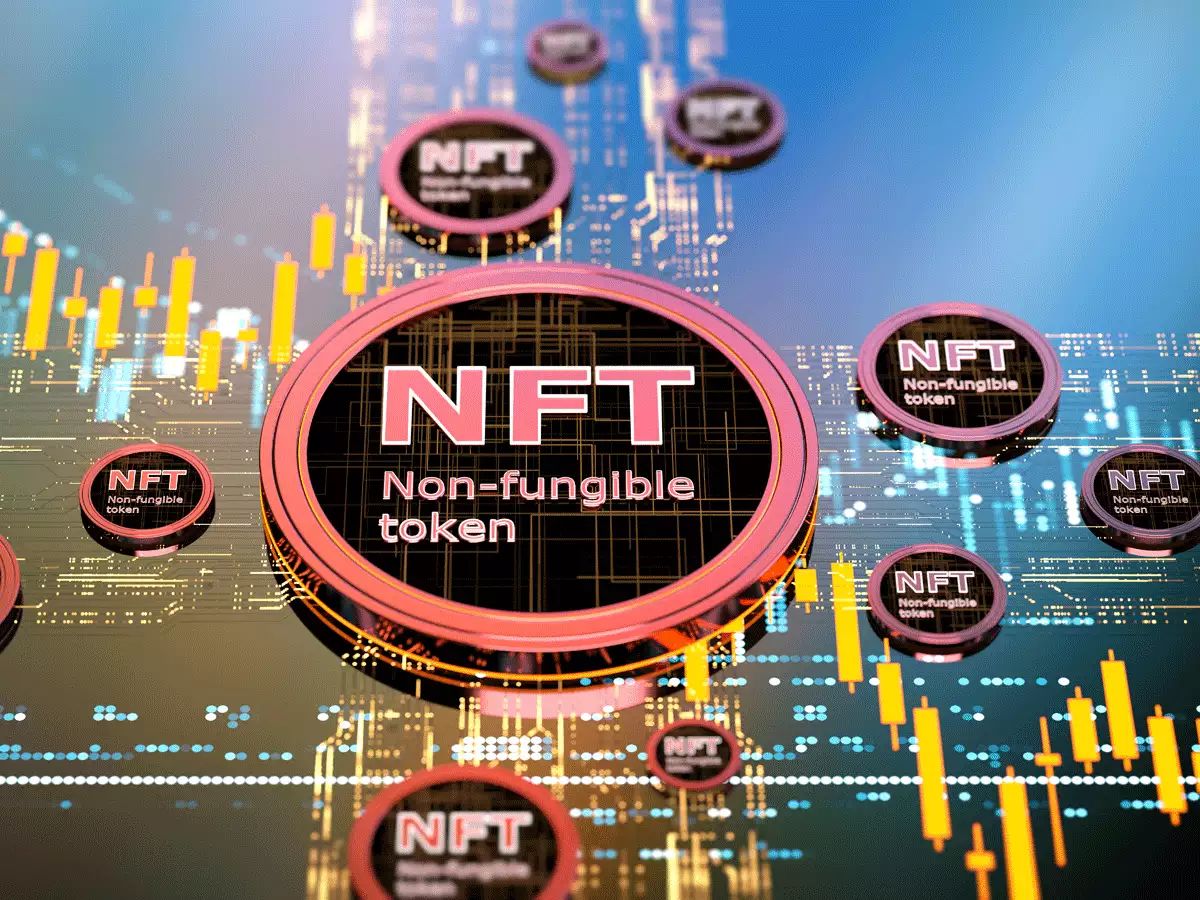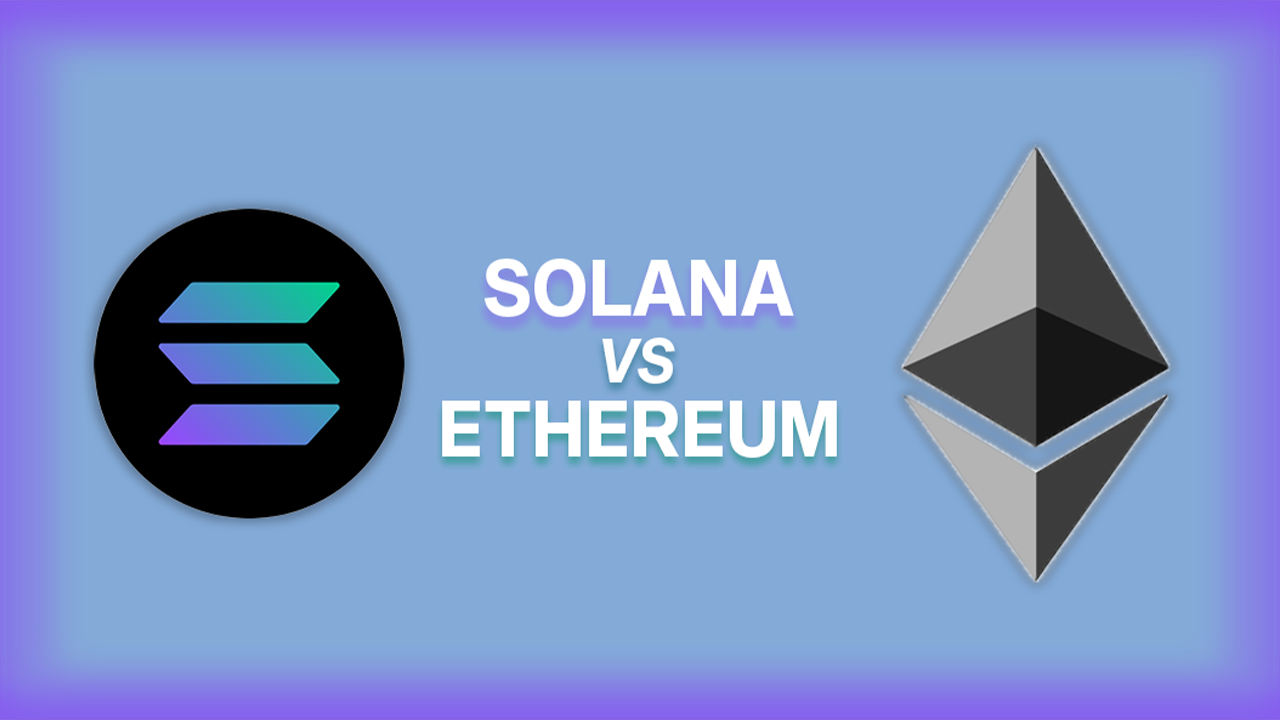Introduction
Welcome to the exciting world of staking NFTs! In this digital era, new trends and innovations continue to emerge, captivating the online community. One such trend gaining traction is the concept of staking non-fungible tokens, or NFTs. But what exactly is staking, and how does it relate to NFTs?
Staking, in the context of cryptocurrency and blockchain technology, refers to the act of holding and locking up tokens in a digital wallet to support the operations of a blockchain network. By staking tokens, individuals contribute to the validation and security of the network, thereby earning rewards in return.
On the other hand, non-fungible tokens, or NFTs, have revolutionized the digital art and collectibles market. Unlike cryptocurrencies such as Bitcoin or Ethereum, NFTs are unique, indivisible digital assets that represent ownership or proof of authenticity of a particular item, whether it be artwork, virtual real estate, or even virtual pets.
Combining the concepts of staking and NFTs opens up a whole new world of opportunities for crypto enthusiasts and collectors. Staking NFTs allows individuals to earn passive income and incentivizes them to hold onto their valuable digital assets for a longer period of time.
The benefits of staking NFTs are numerous. It not only offers a way to augment the value of your NFT collection but also provides additional utility to these digital assets beyond their inherent value as collectibles. By staking NFTs, you become an active participant in the blockchain network and contribute to its overall security and operation.
However, it is important to be aware of the risks and considerations associated with staking NFTs. While the potential for earning rewards is appealing, it is crucial to understand the volatility and unpredictability of the cryptocurrency market. Additionally, not all NFTs can be staked, and the rewards and staking mechanisms can vary between different platforms.
In this article, we will explore the world of staking NFTs in greater detail. We will delve into the benefits, how staking NFTs work, examples of staking NFT platforms, and the risks and considerations you should keep in mind. By the end of this article, you will have a solid understanding of what staking NFTs entail and whether it is a venture you would like to explore further.
What is Staking?
Staking is a process that involves holding and locking up tokens in a digital wallet to support the operations and security of a blockchain network. It is a mechanism commonly used in proof-of-stake (PoS) blockchain systems to reach consensus and validate transactions.
In a PoS network, rather than relying on miners to validate transactions through computational work as in proof-of-work (PoW) systems, validators are chosen based on the number of tokens they hold and are willing to lock up as collateral. By doing so, validators have a stake in the network’s security and are incentivized to act in its best interest.
When you stake tokens, you are essentially contributing to the overall security and stability of the network. The tokens you stake are held in a digital wallet, often referred to as a staking wallet or staking address. This wallet is different from a regular cryptocurrency wallet as it supports the staking functionality.
By staking tokens, you become an active participant in the blockchain network’s consensus mechanism. You help to validate and verify transactions, secure the network from potential attacks, and maintain its integrity. In return for your contribution, you receive rewards in the form of additional tokens, which are often distributed proportionally to your stake.
Staking provides several benefits beyond the potential for earning rewards. It encourages token holders to have a long-term commitment to the network, reducing the likelihood of short-term speculative behavior. Additionally, staking helps to decentralize the network, as more participants hold and stake tokens, spreading control and influence among a wider user base.
The staking process typically involves selecting a validator or a group of validators to delegate your tokens to. Validators are responsible for verifying transactions and securing the network. In some proof-of-stake systems, delegators can choose multiple validators to spread their risk and increase their chances of earning rewards.
It is important to note that staking does come with some considerations and risks. The value of the tokens you stake is subject to market fluctuations, so there is still a level of risk involved. Additionally, there might be minimum staking requirements or lock-up periods set by the network, which can limit the liquidity of your tokens.
In the world of NFTs, the concept of staking takes on a new dimension. By staking NFTs, collectors can further engage with their digital assets, potentially earning rewards and contributing to the growth and security of the blockchain networks that support these NFTs.
What are NFTs?
Non-fungible tokens (NFTs) have made a significant impact on the digital world in recent years. Unlike cryptocurrencies such as Bitcoin or Ethereum, which are interchangeable on a one-to-one basis, NFTs are unique digital assets that represent ownership or proof of authenticity of a specific item.
NFTs can be thought of as digital certificates of ownership, stored on a blockchain. Each token contains metadata that provides information about the asset, including its creator, ownership history, and any associated intellectual property rights. This uniqueness and verifiability make NFTs ideal for representing digital art, collectibles, virtual real estate, and even virtual pets.
One of the key characteristics of NFTs is their indivisibility. Unlike cryptocurrencies that can be divided into smaller units, NFTs cannot be split. This ensures the scarcity and exclusivity of each digital asset, enhancing its value and desirability for collectors.
NFTs have gained popularity due to their potential to revolutionize ownership and monetization of digital content. Artists and creators can directly sell their work as NFTs, allowing them to retain ownership and receive royalties whenever their work is resold. This creates new revenue streams and opportunities for creators to monetize their creations without traditional intermediaries.
Furthermore, NFTs enable collectors to build unique and personalized collections. Whether it’s rare digital artwork, iconic moments in sports or entertainment, or virtual assets in gaming, NFTs provide a way to showcase ownership and engage with the digital world in a whole new way.
The value of an NFT is derived from various factors, including its scarcity, uniqueness, demand, and the reputation of its creator. The market for NFTs has seen explosive growth, with high-profile sales and auctions attracting significant attention. However, it is worth noting that the value of NFTs can be volatile, much like other speculative assets.
The underlying technology that powers NFTs is blockchain, specifically Ethereum’s blockchain, which is currently the most popular platform for creating and trading NFTs. The immutability and transparency of blockchain ensure the integrity and authenticity of NFTs, making it difficult to counterfeit or duplicate them.
The world of NFTs is constantly evolving, with new use cases and innovations emerging regularly. From virtual fashion and virtual real estate to music and virtual collectible cards, NFTs continue to push the boundaries of digital ownership and create new opportunities for creators, collectors, and investors alike.
What is Staking NFT?
Staking NFTs is the process of locking up non-fungible tokens (NFTs) in order to participate in staking and earn rewards on a blockchain network. While traditional staking involves locking up fungible tokens, staking NFTs allows collectors to leverage the unique characteristics of their digital assets to actively engage with and benefit from blockchain networks.
By staking NFTs, collectors contribute to the security and operation of the blockchain network. The act of staking demonstrates a long-term commitment to the network and helps maintain its integrity by validating transactions and securing the network’s consensus mechanism.
Staking NFTs introduces an additional layer of utility to these digital assets. Instead of solely relying on their inherent value as collectibles, NFT holders can earn passive income in the form of rewards for staking their tokens. The amount of rewards earned typically depends on factors such as the duration of the stake, the amount staked, and the specific staking mechanism of the platform or network.
Staking NFTs can also provide benefits beyond financial rewards. It allows collectors to actively participate in and support the blockchain network’s growth and development. By staking valuable NFTs, collectors can play a role in the network’s governance or decision-making processes, contributing to its overall direction and evolution.
The ability to stake NFTs opens up new possibilities for collectors to showcase their commitment and dedication to their digital assets. It provides an opportunity to create a more interactive and immersive experience, strengthening the bond between collectors and their NFTs.
It is important to note that not all NFTs can be staked, as it depends on the specific capabilities and functionalities of the blockchain network or platform. Some NFT projects are specifically designed to support staking, while others may not have the necessary infrastructure in place.
Staking NFTs also introduces some considerations. Collectors should carefully evaluate the risks involved, including the potential loss of liquidity if NFTs are locked up for an extended period. Additionally, the rewards and staking mechanisms can vary between different platforms, so it is essential to thoroughly research and understand the specific staking rules and conditions.
Overall, staking NFTs brings together the worlds of blockchain technology and digital collectibles, offering collectors an opportunity to actively engage with their NFTs beyond simple ownership. By staking their NFTs, collectors can earn rewards, contribute to the network’s security, and shape the future of the blockchain ecosystem.
Benefits of Staking NFT
Staking non-fungible tokens (NFTs) offers a range of benefits that go beyond the inherent value of these digital collectibles. Let’s explore some of the key advantages of staking NFTs:
1. Passive Income: Staking NFTs allows collectors to earn passive income by locking up their tokens and participating in the staking process. By contributing to the operation and security of the blockchain network, collectors can be rewarded with additional tokens, providing a potential source of ongoing income.
2. Increased Value: Staking NFTs can augment the value of these digital assets. The act of staking demonstrates a long-term commitment to the network, potentially attracting more interest from other collectors and investors. Additionally, the scarcity created by staking can enhance the value and desirability of the NFTs.
3. Active Participation: Staking NFTs allows collectors to actively participate in the blockchain network. By staking their NFTs, collectors become an integral part of the network’s consensus mechanism, contributing to transaction validation and network security. This active involvement promotes a sense of ownership and engagement with the blockchain ecosystem.
4. Governance and Influence: Some staking networks provide token holders with governance rights, allowing them to have a say in the decision-making processes of the network. This includes voting on proposals, suggesting improvements, and shaping the future direction of the platform. Staking NFTs can give collectors a voice in the evolution of the blockchain network and its associated projects.
5. Strengthened Collectible Value: Staking NFTs can enhance the collectible value of these digital assets. By showcasing the commitment to hold and stake valuable NFTs, collectors can demonstrate the rarity and exclusivity of their collections. This can make their NFTs more attractive to other collectors, potentially leading to increased demand and higher resale value.
6. Community Engagement: Staking NFTs often comes with access to dedicated communities and forums where collectors can connect and engage with like-minded individuals. These communities foster collaboration, knowledge sharing, and a sense of camaraderie among NFT enthusiasts. By staking NFTs, collectors can forge new relationships and tap into the collective expertise of the community.
7. Long-Term Investment: Staking NFTs encourages collectors to take a long-term investment approach. By locking up NFTs, collectors are more likely to hold onto their digital assets, potentially benefiting from future price appreciation. The long-term commitment of staking aligns with the idea of building a valuable and enduring NFT collection.
While staking NFTs offers various benefits, it is important to weigh these advantages against the potential risks and considerations, including market volatility, lock-up periods, and platform-specific factors. Collectors should carefully evaluate the specific staking mechanisms and rules associated with their chosen blockchain networks or platforms.
By staking NFTs, collectors can not only enhance the value of their digital assets but also actively participate in the growth and development of the blockchain ecosystem. The ability to earn passive income and contribute to network security motivates collectors to engage with their NFTs beyond mere ownership, creating a more immersive and rewarding experience.
How Does Staking NFT Work?
Staking non-fungible tokens (NFTs) involves a process that is similar to staking traditional cryptocurrencies, but with some unique considerations specific to the nature of NFTs. Let’s explore how staking NFTs typically works:
1. Choose a Staking Platform: Start by selecting a blockchain network or platform that supports staking NFTs. It’s important to research and choose a platform that aligns with your needs, considering factors such as the network’s reputation, staking rewards, fees, and community engagement.
2. Verify NFT Staking Compatibility: Ensure that the NFTs you own are compatible with the staking platform you have selected. Not all NFTs can be staked, as it depends on the specific functionalities and capabilities of the blockchain network. Look for information provided by the platform or consult with the project’s documentation or community to determine if staking is possible.
3. Set up a Staking Wallet: Create a staking wallet or use an existing wallet that supports the staking functionality for the chosen platform. This wallet should allow you to securely store and manage your NFTs and tokens. Follow the platform’s instructions to set up the wallet and ensure that it is compatible with staking NFTs.
4. Delegate or Lock Up NFTs: Depending on the platform, you may need to delegate or lock up your NFTs in a specific staking contract or address. This process typically involves sending or assigning your NFTs to a specific wallet address to indicate your intent to stake them and contribute to the network’s operations. Make sure to follow the platform’s instructions closely to ensure the successful staking of your NFTs.
5. Stake and Earn Rewards: Once your NFTs are successfully staked, they actively participate in the network’s staking process. This process varies depending on the platform, but generally involves validating transactions, securing the network, and contributing to the consensus mechanism. As a reward for your contribution, you earn additional tokens, usually in proportion to your stake and the staking duration.
6. Monitor and Manage Staked NFTs: It’s important to keep an eye on your staked NFTs and the rewards they generate. Regularly check the staking platform or wallet for updates on your staked NFTs, rewards earned, and any additional actions you need to take. Some platforms may allow you to unstake or withdraw your NFTs and rewards at certain intervals or when specific conditions are met.
7. Consider Staking Periods and Requirements: Different staking platforms and networks may have specific requirements and rules regarding staking periods and minimum stake amounts. Familiarize yourself with these details to ensure compliance and to understand the potential impact on the liquidity and accessibility of your staked NFTs.
It’s worth noting that the staking process for NFTs can vary between different platforms and networks. Some platforms may offer more flexibility and options for staking, such as the ability to stake multiple NFTs or choose different staking durations. Take the time to research and understand the specific staking mechanisms and rules of your chosen platform.
Staking NFTs provides an opportunity to earn passive income and actively engage with the blockchain network through your digital collectibles. By following the staking process, you become an integral part of the network, contributing to its security and growth while reaping rewards in return.
Examples of Staking NFT Platforms
As the concept of staking NFTs continues to gain popularity, several platforms have emerged that support the staking of non-fungible tokens (NFTs). Here are a few examples of staking NFT platforms:
1. Aavegotchi: Aavegotchi is a decentralized platform where users can stake NFTs in the form of cute, ghost-like creatures called Aavegotchis. By staking these Aavegotchis, users earn rewards in the form of GHST tokens. Aavegotchi combines the excitement of NFT ownership with the potential for earning staking rewards.
2. Rarible: Rarible is a popular NFT marketplace that also offers staking capabilities. Through Rarible’s staking program, users can stake their RARI utility tokens to earn additional rewards. The staking rewards are designed to incentivize active participation in the Rarible community, such as creating and curating NFTs on the platform.
3. Axie Infinity: Axie Infinity is a blockchain-based game where players can breed, collect, and battle digital creatures known as Axies. The game also allows individuals to stake their Axie NFTs to become community moderators and earn additional in-game rewards. Staking Axies provides players with a way to actively engage with the game ecosystem while earning rewards.
4. Ethereum 2.0: Ethereum 2.0 is an upgrade to the Ethereum blockchain that introduces a proof-of-stake (PoS) consensus mechanism. With Ethereum 2.0, individuals can stake their ETH cryptocurrency to support the network and earn rewards in the form of additional ETH tokens. Although not specific to NFTs, Ethereum 2.0 allows users to stake their tokens, which could include NFTs built on the Ethereum blockchain.
5. Polkadot: Polkadot is a multi-chain platform that allows for interoperability between different blockchains. Through its staking mechanism, known as “nomination,” individuals can stake their DOT tokens and play a role in securing the network. While Polkadot is not solely focused on NFTs, it offers opportunities for staking DOT tokens, which can include NFTs built on the Polkadot network.
These are just a few examples of staking NFT platforms, and the space continues to evolve with new platforms and projects emerging. It’s important to conduct thorough research and due diligence when considering staking NFTs on any platform. Pay attention to factors such as the platform’s reputation, staking rewards, fees, and community engagement before deciding where to stake your NFTs.
Additionally, keep in mind that the staking mechanisms, rewards, and requirements can vary between platforms. Some platforms may offer more flexibility, allowing users to stake various types of NFTs or provide additional benefits for staking specific NFT collections. Take the time to thoroughly understand the specific rules, mechanisms, and potential risks associated with staking NFTs on each platform.
Staking NFTs on these platforms provides collectors and users with an opportunity to not only engage with their digital assets but also earn rewards and contribute to the growth and security of the blockchain networks that support the NFT ecosystem.
Risks and Considerations of Staking NFTs
While staking non-fungible tokens (NFTs) offers several benefits, it is crucial to be aware of the potential risks and considerations involved. Here are some key factors to consider when staking NFTs:
1. Market Volatility: The value of both the staked NFTs and the earned rewards can fluctuate significantly due to market volatility. Cryptocurrency markets are known for their price volatility, and NFTs may also experience price fluctuations based on demand and trends. It is important to be prepared for potential price swings and understand that the value of staked NFTs may change over time.
2. Lock-Up Periods: Some staking platforms may require users to lock up their NFTs for a specified period. During this lock-up period, the staked NFTs cannot be freely bought, sold, or transferred. Consider the duration of the lock-up period and assess your liquidity needs and the potential impact on the accessibility and marketability of your NFTs before committing to staking.
3. Network Risks: When staking NFTs, you become part of the underlying blockchain network’s operations and security. It is essential to assess the specific network’s risks, including potential vulnerabilities, attacks, governance challenges, or technological issues. Stay informed about the network’s upgrades, security measures, and ongoing developments to make informed decisions about staking your NFTs.
4. Platform and Counterparty Risks: Evaluate the platform or service provider’s reputation and security measures before staking your NFTs. Consider factors such as the platform’s track record, security practices, transparency, and community feedback. Use reputable platforms that have undergone security audits to minimize the risk of hacking, fraudulent activities, or poor governance practices.
5. Lack of Liquidity: Staking NFTs can limit the liquidity of your digital assets. During the staking period, you may not be able to freely use or trade your NFTs. It is essential to consider your financial needs, investment time horizon, and potential future use of the NFTs before staking them. Ensure that you are comfortable with the potential loss of immediate liquidity associated with staking.
6. Staking Rewards and Mechanisms: Different staking platforms offer varying rewards structures, staking mechanisms, and token distribution models. Research and understand the details of the platform’s staking rules, including the potential risks of slashing penalties, reward distribution mechanisms, and any fees associated with staking. Be realistic about the potential rewards and carefully assess the platform’s historical performance and community feedback.
7. Regulatory Considerations: Staking NFTs may have legal and tax implications, as the regulatory landscape for cryptocurrencies and NFTs is still developing in many jurisdictions. Consult with legal and tax advisors to ensure compliance with relevant laws and regulations, especially if you are staking a significant value of NFTs.
It’s crucial to evaluate the risks and considerations associated with staking NFTs before engaging in this activity. Thoroughly research and understand the specific staking platform, network, and NFTs you plan to stake. Take into account your risk tolerance, investment goals, and the potential impact on your overall NFT collection before making any staking decisions.
By being well-informed and cautious, you can mitigate potential risks and make informed choices about staking your NFTs.
Conclusion
Staking non-fungible tokens (NFTs) provides a unique opportunity for collectors to engage with their digital assets and contribute to blockchain networks while potentially earning rewards. Staking NFTs brings together the worlds of blockchain technology and digital collectibles, offering benefits beyond the inherent value of these unique digital assets.
By staking NFTs, collectors can earn passive income, augment the value of their NFT collections, and actively participate in the operation and security of the blockchain networks. Staking demonstrates a long-term commitment to the network and fosters a sense of ownership and engagement with the NFT ecosystem.
However, it is essential to carefully consider the risks and factors associated with staking NFTs. Market volatility, lock-up periods, network and platform risks, lack of liquidity, and regulatory considerations are all factors that collectors should evaluate before diving into the world of staking. Thorough research and a deep understanding of the staking platform, network, and specific NFTs being staked are crucial when making informed decisions.
Examples of staking NFT platforms, such as Aavegotchi, Rarible, Axie Infinity, Ethereum 2.0, and Polkadot, showcase the growing opportunities for staking NFTs and earning rewards within the blockchain and NFT communities.
Staking NFTs can be a rewarding and exciting journey for collectors who want to actively engage with their digital assets. It offers a way to go beyond simple ownership and create a more immersive experience within the evolving NFT ecosystem.
As the world of NFTs and blockchain technology continue to evolve, staking NFTs holds the promise of more innovation, utility, and potential for growth. However, it is vital for collectors to stay informed, assess the risks, and make well-informed decisions based on their individual goals and risk tolerance.
So, explore the possibilities, understand the nuances, and embark on your staking journey in the world of NFTs with confidence and careful consideration.







